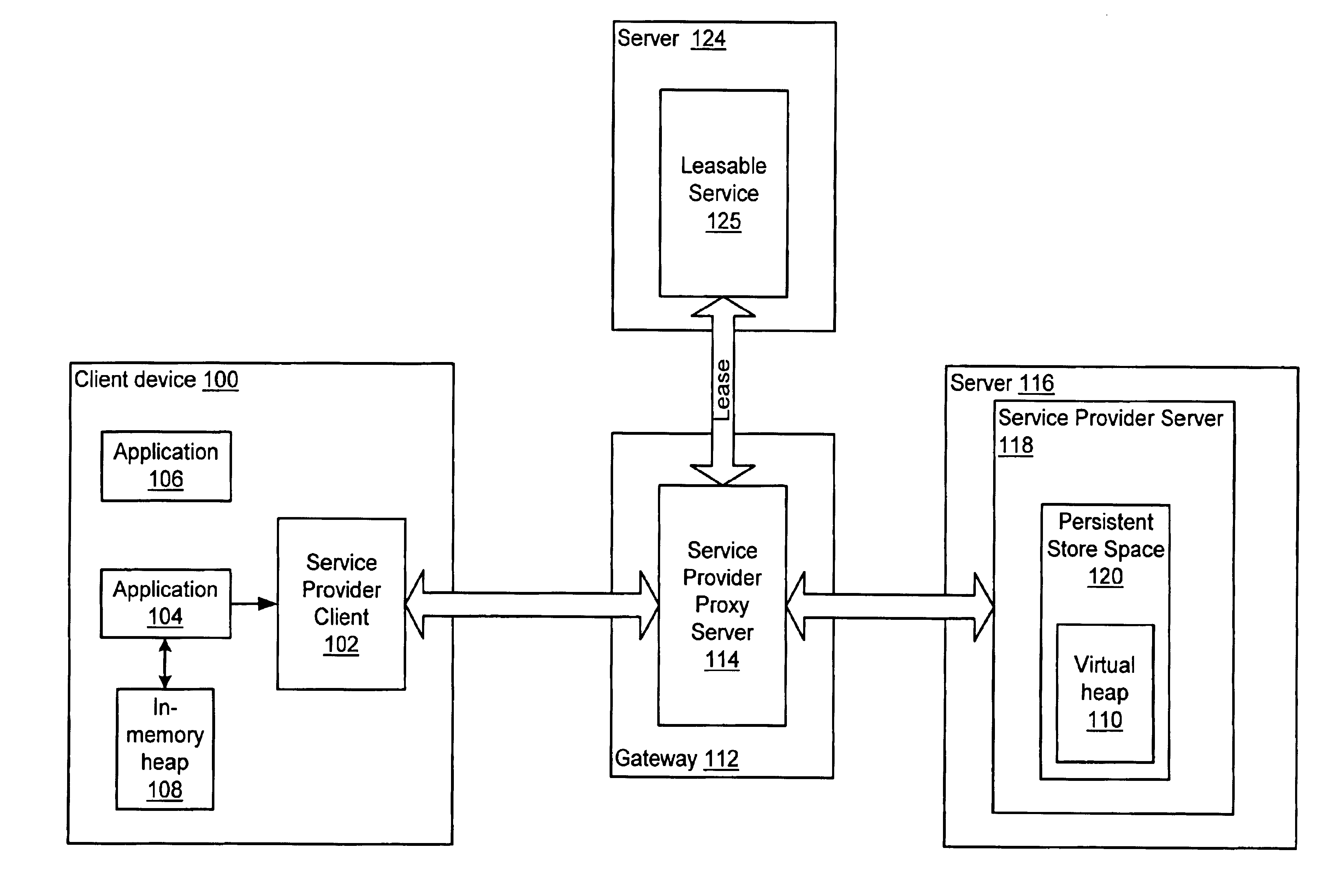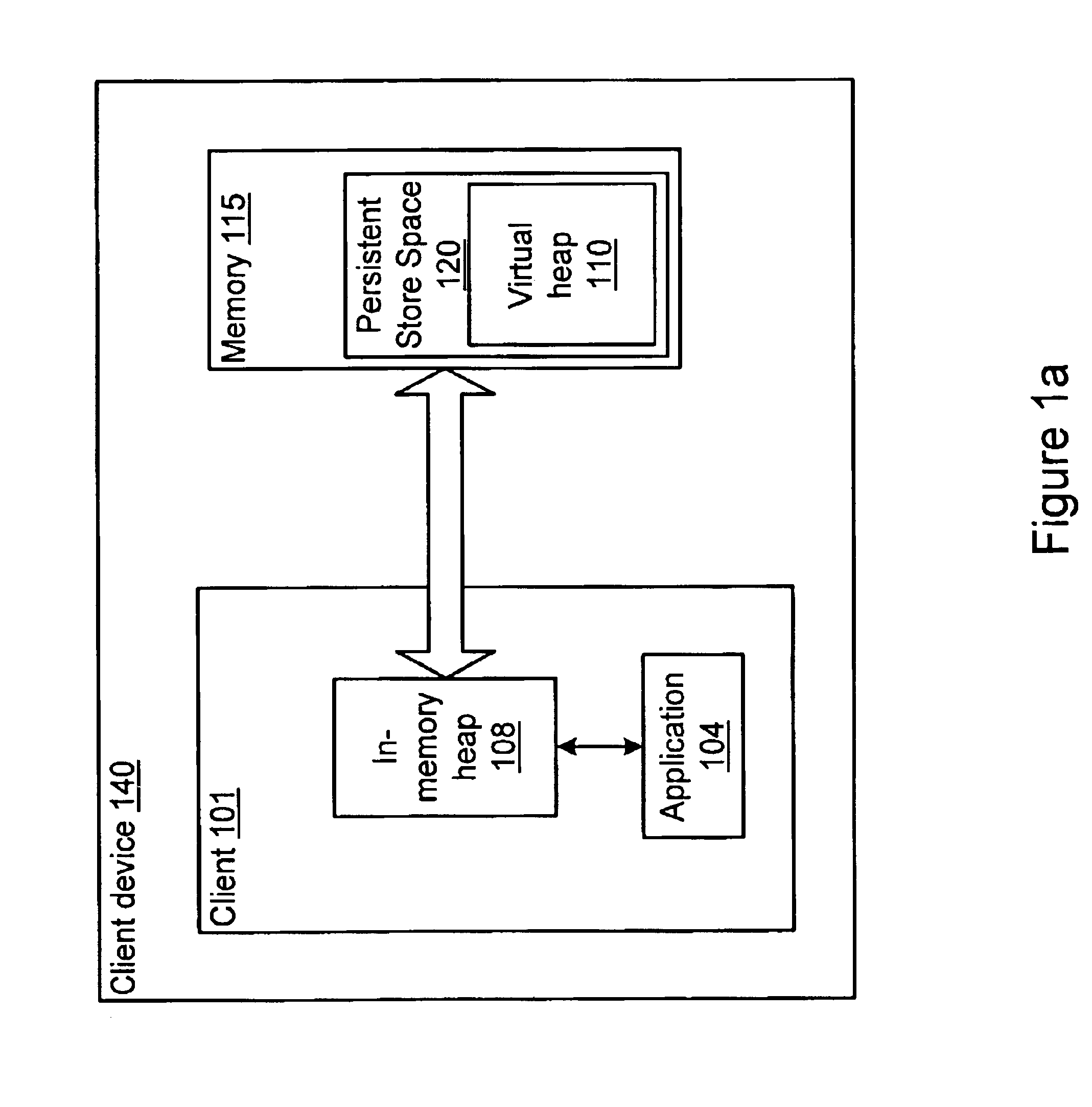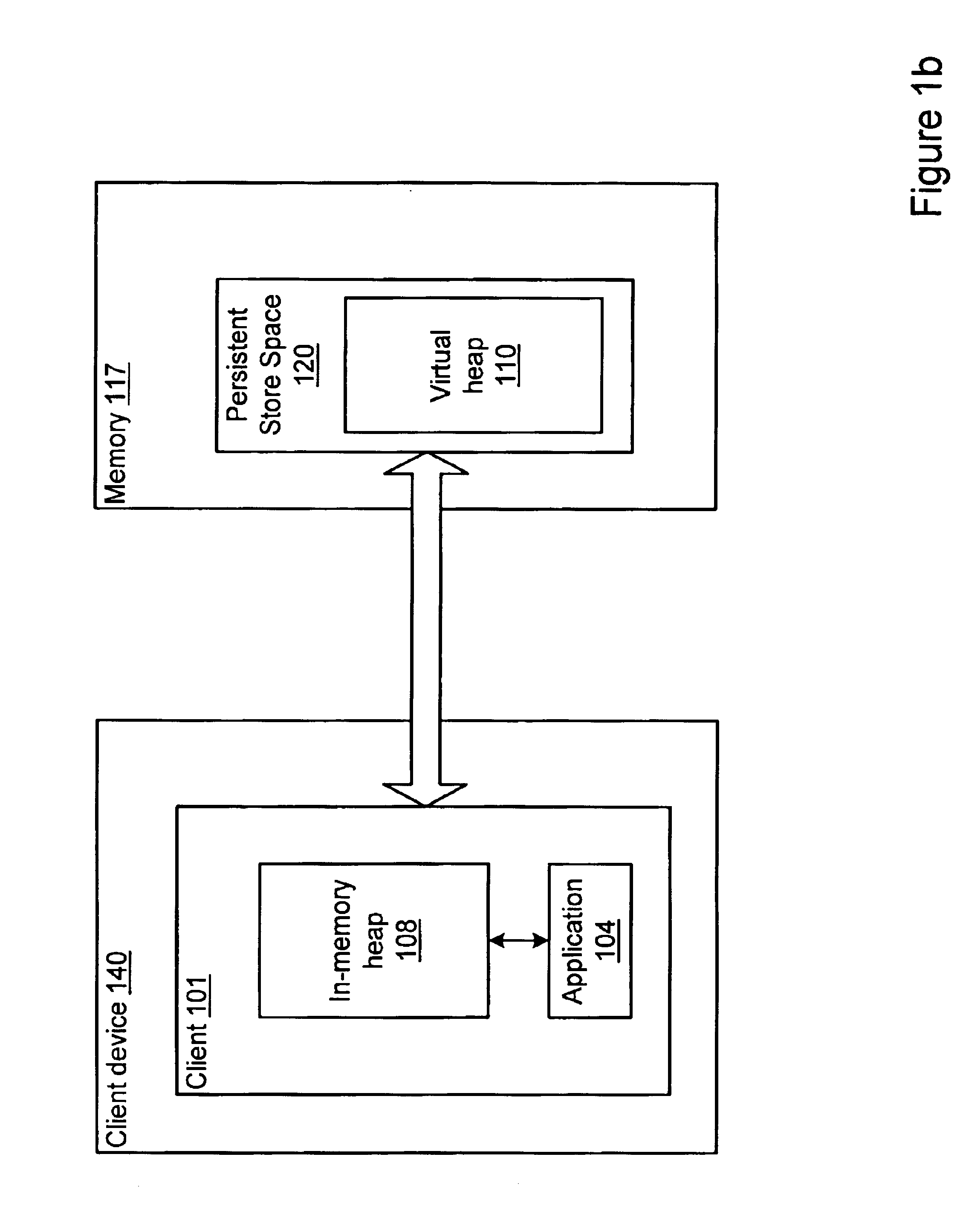System and method for migrating processes on a network
a network and process technology, applied in the field of network computing, can solve the problems of not much success in actually solving this difficult problem, unreliability, and complex modern operating system, and achieve the effects of improving object locality, reducing or substantially eliminating fragmentation, and good performan
- Summary
- Abstract
- Description
- Claims
- Application Information
AI Technical Summary
Benefits of technology
Problems solved by technology
Method used
Image
Examples
Embodiment Construction
FIG. 1a—A Device with Virtual Persistent Heap on the Device
[0073]FIG. 1a illustrates an embodiment of a device 140 with virtual machine 101 and a virtual heap with persistence, referred to as a virtual persistent heap. In a virtual persistent heap, the entire heap may be made persistent. The virtual persistent heap may enable the checkpointing of the state of the computation of the virtual machine to a persistent storage such as a disk or flash device for future resumption of the computation at the point of the checkpoint. The Virtual Persistent Heap also may enable the migration of the virtual machine computation states from one machine to another. Both the data and computation state may be migrated. One embodiment may also provide for the suspension and resumption of an application, such as upon restarting a device after an intentional or unintentional shutdown of the device.
[0074]In FIG. 1a, device 140 includes a client 101 and memory 115. Client device 140 may be a computer plat...
PUM
 Login to View More
Login to View More Abstract
Description
Claims
Application Information
 Login to View More
Login to View More - R&D
- Intellectual Property
- Life Sciences
- Materials
- Tech Scout
- Unparalleled Data Quality
- Higher Quality Content
- 60% Fewer Hallucinations
Browse by: Latest US Patents, China's latest patents, Technical Efficacy Thesaurus, Application Domain, Technology Topic, Popular Technical Reports.
© 2025 PatSnap. All rights reserved.Legal|Privacy policy|Modern Slavery Act Transparency Statement|Sitemap|About US| Contact US: help@patsnap.com



